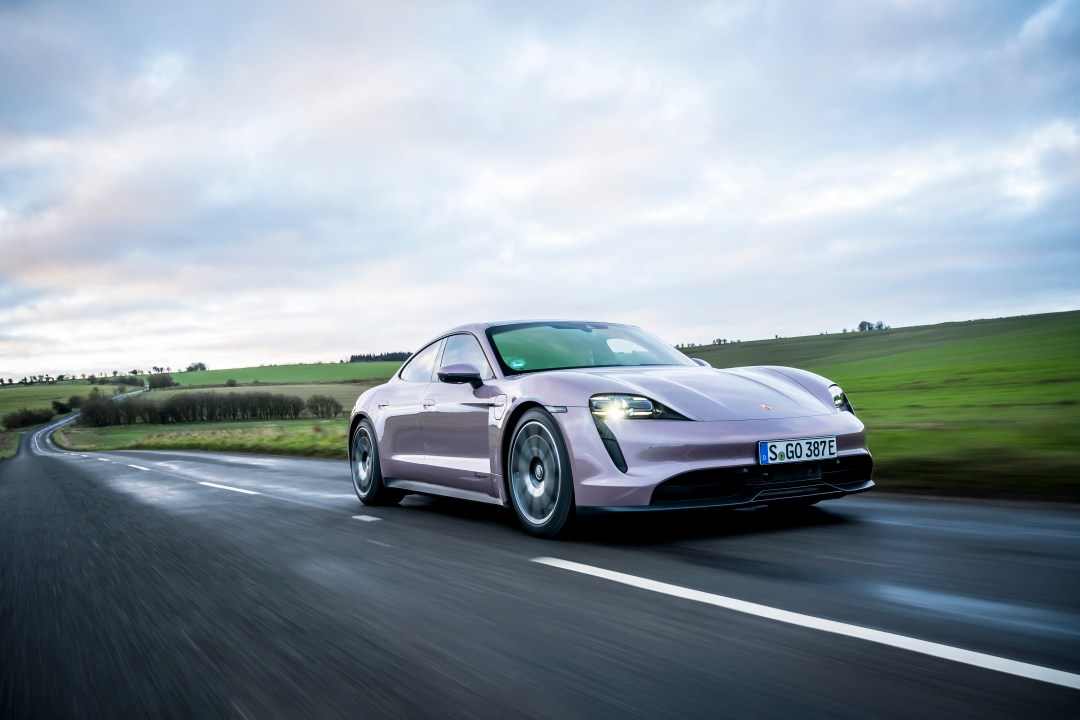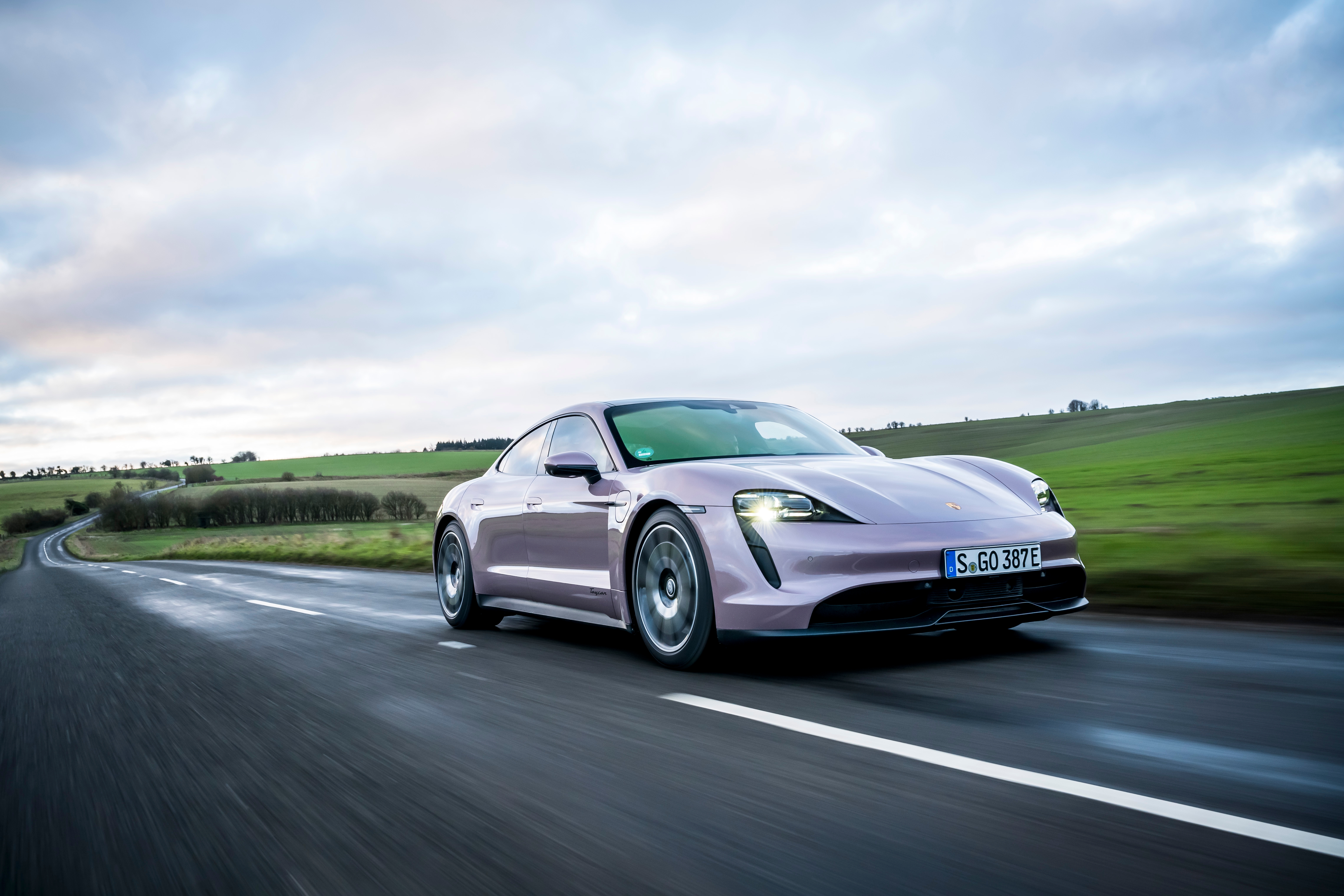How far the world of electric vehicles has come in just a decade. Back in 2011, the most prevalent ‘EV’ to be found on the streets of London was probably a G-Wiz, the Indian-built microcar that was so light, small and slow that it was officially deemed not to be a car at all, but ‘a heavy quadricycle.’ But the 2012 launch of Tesla’s Model S proved that battery power wasn’t just for speed-fearing tree-huggers whose idea of excitement was to potter to the shops at 15mph in what was widely regarded as one of the least attractive automobiles ever made. No – electric cars could be fast, fun, glamorous and covetable.
And now there’s no going back: EVs are here to stay, and every manufacturer worth its salt is making them – including Porsche, a marque famous for building exciting, hugely capable and often challenging ‘driver’s’ cars. Having owned, driven and loved my old 911 for the past 15 years, I can’t deny that the thought of a sporting Porsche with anything other than a wailing, preferably air-cooled, flat-six engine in the back doesn’t seem quite right. But the launch of the all-electric Taycan has proved that not all Porsche fans are so backward-thinking.
Although it only entered production in 2019, the Taycan became Porsche’s second best-selling model (after the 911) last year, with more than 20,000 sold around the world. Praised for combining its electric drive train with all of the performance and much of the feel and character of petrol-engined Porsches, the Taycan also (and importantly) displays the marque heritage in its styling. It really does look like a Porsche. In less than two years, the range has grown to include no fewer than eight models and two body styles – the regular, four-door coupe and the more recently introduced ‘Cross Turismo’ sports wagon – with the top-of-the-range Turbo S versions offering all-wheel-drive through front and rear electric motors that produce a combined 761PS to give an eyeball-searing zero-62mph acceleration time of just 2.9 seconds. But the price you’ll pay for such performance is almost £139,000 for the Turbo S coupe and £1,000 more than that for the Cross Turismo version.
But what if you simply want an electric Porsche that offers the kudos of the marque and goes more than fast enough to lose you your licence but doesn’t cost six figures? The answer might be to buy the latest addition to the line-up, the ‘basic’, two-wheel drive model that’s simply named ‘Taycan’. Even though it relies on just one rear-driving motor, the entry-level Taycan still offers a top speed of 143mph and can hit 62mph in 5.4 seconds – which is slightly quicker than the petrol-engined Panamera four-door which resembles it. And, at £70,690, its more or less half the price of the ‘ultimate’ Taycan models.
Perhaps surprisingly, the entry level Taycan has won praise for possibly being the most driver-orientated car in the range – and to prove it’s not boring, Porsche took one into the Guinness Book of World Records when an instructor at its Hockenheim ‘Experience Centre’ kept one in a constant ‘drift’ around a water-soaked oval for 55 minutes and 42km. During my own, less fraught 100-mile test run, it was quickly apparent that the car’s rear-wheel-drive configuration meant there was fun to be had, while the car’s front end – far lighter than that of its more expensive all-wheel-drive stablemates – offered the type of direct and instant steering that will be familiar to any 911 fan.
The Taycan I tried was pretty funky to look at, too, being finished in a sort of watery pink hue – a £774 option called ‘Frozen Berry’ – and sitting on 20-inch Sport Aero wheels.(Sorry, that’s another £1,776….). The interior, meanwhile, has a suitably sci-fi feel with ultra-clear digital instruments, a typically high-quality Porsche infotainment system, an impressive Burmester hi-fi and roomy and comfortable accommodation for four adults.
As with all electric cars, however, the most important question is not ‘how fast?’ but ‘how far?’ – as in, how far can you travel before running out of juice? In the Taycan’s case, that’s a claimed 268 miles, with 301 available from the ‘Performance Battery Plus’ (a £4,800 option) both being entirely practical for real-world use. All of which adds-up to a luxury electric car that represents a worthy rival to the market-leading Tesla but comes with the added benefits of Porsche build quality and driving feel.
Do I want one? Maybe one day – but until we’re banned from enjoying the thrill of a high-performance petrol engine (which won’t be long, I’m sure) I’ll stick with my old dinosaur of a 911, thank you.







Comments